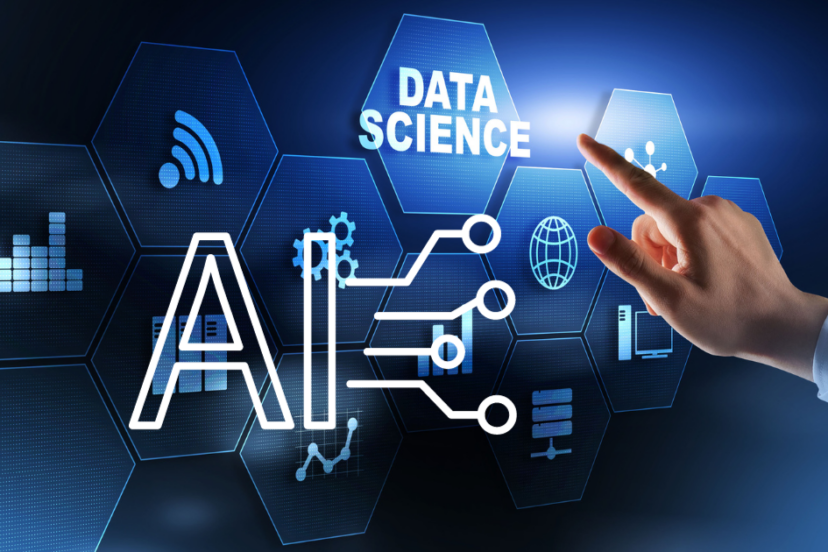How Data Science and Artificial Intelligence are Paving the Way for the Next Technological Era
Ready to dive into the exciting world where data science and artificial intelligence meets? We’re about to unravel the coolest stuff happening in the next-gen tech era! Imagine data science as a detective solving mysteries in gigantic piles of information. Now, think of AI as the wizard turning these discoveries into real-world magic. Together, they’re changing the game, reshaping how things work in industries, cities, and beyond.
Get ready for a journey into tomorrow’s possibilities, where data science and AI aren’t just paving the way—they’re creating a canvas of endless potential. We’re in for a future where innovation meets ethics, and the road ahead is guided by the epic dance of humans and machines. Buckle up, the tech adventure starts now!
The Dynamics of Data Science
The exponential growth of data has given rise to the need for sophisticated tools to extract meaningful insights. Data Science employs advanced statistical techniques, machine learning algorithms, and data analysis to uncover patterns, trends, and valuable information from vast datasets.
Data Science enables organizations to make informed predictions and forecasts, empowering them to anticipate market trends, customer behavior, and potential business challenges. This predictive capability enhances strategic planning and decision-making
The Rise of Artificial Intelligence
- Machine Learning and Deep Learning: AI, particularly through machine learning and deep learning, allows systems to learn and improve from experience. This capability is revolutionizing industries such as healthcare, finance, and manufacturing, where AI algorithms can analyze complex datasets and make decisions with minimal human intervention.
- Natural Language Processing (NLP): AI-powered NLP is transforming the way humans interact with technology. Virtual assistants, chatbots, and language translation services are becoming increasingly sophisticated, enabling seamless communication between humans and machines.
Steps in Incorporating Data Science and Artificial Intelligence
1. Data Collection and Preparation:
The first crucial step in the synergy of data science and artificial intelligence involves the systematic gathering of relevant data. This process encompasses identifying sources, selecting appropriate data types, and ensuring data quality. Once collected, the raw data undergoes a thorough preparation phase, including cleaning, transformation, and normalization. This step is vital to ensure that the data is in a format suitable for analysis and modeling.
2. Exploratory Data Analysis (EDA):
Following data preparation, exploratory data analysis comes into play. This step involves employing statistical and visual techniques to grasp the underlying patterns and structures within the data. Through EDA, data scientists gain insights that guide subsequent modeling decisions. Visualization tools and statistical methods help identify trends, outliers, and correlations, providing a comprehensive understanding of the dataset.
3. Feature Engineering:
Feature engineering is a critical aspect that focuses on selecting, modifying, or creating relevant features for model training. This step requires domain expertise and creativity to extract the most informative aspects of the data. Well-crafted features significantly impact the performance of machine learning models, enhancing their ability to generalize patterns and make accurate predictions.
4. Model Development:
With the prepared and engineered data, the next step involves the development of machine learning or deep learning models. Data scientists select appropriate algorithms based on the nature of the problem at hand, considering factors like accuracy, interpretability, and computational efficiency. Model training involves feeding the prepared data to the algorithm, allowing it to learn patterns and relationships.
5. Model Evaluation and Tuning:
Once a model is trained, it undergoes evaluation to assess its performance on unseen data. Metrics such as accuracy, precision, recall, and F1 score provide insights into the model’s effectiveness. Model tuning follows, involving adjustments to hyperparameters to optimize performance. This iterative process aims to enhance the model’s predictive capabilities and generalizability.
6. Deployment:
After achieving a satisfactory model, the next step is deployment. This involves integrating the model into a production environment, making it accessible for real-time predictions. Deployment considerations include scalability, reliability, and monitoring to ensure ongoing performance and adaptability to changing data patterns.
7. Continuous Monitoring and Maintenance:
The final step involves continuous monitoring and maintenance of the deployed model. This ensures that the model remains effective as new data becomes available and that any drift in data distribution is addressed promptly. Ongoing maintenance may involve retraining the model periodically to keep it relevant and accurate in an evolving environment.
How Data Science and Artificial Intelligence
Data science and artificial intelligence (AI) are at the forefront of shaping the next wave of technology. The synergy between these two fields has the potential to revolutionize various industries and significantly impact the way we live and work. Here are some key ways in which data science and AI are changing the technological landscape:
Predictive Analytics:
Data science, with the help of machine learning algorithms, enables predictive analytics. Businesses can use historical data to make informed predictions about future trends, customer behavior, and market dynamics. This capability enhances decision-making processes and allows organizations to stay ahead of the competition.
Personalization:
AI algorithms analyze vast amounts of data to understand individual preferences and behaviors. This knowledge is then utilized to provide personalized recommendations in areas such as e-commerce, content streaming, and online services. As a result, user experiences are more tailored, leading to higher customer satisfaction.
Automation and Efficiency:
AI-powered automation is transforming industries by streamlining processes and increasing efficiency. Tasks that were once time-consuming and manual can now be automated using machine learning models. This not only reduces human error but also frees up valuable time for employees to focus on more strategic and creative aspects of their work.
Healthcare Innovations:
In healthcare, data science and AI are contributing to diagnostic advancements, personalized medicine, and predictive healthcare analytics. Machine learning models can analyze medical records, genetic data, and other relevant information to assist in disease diagnosis, treatment planning, and drug discovery.
Natural Language Processing (NLP):
NLP, a subfield of AI, has seen significant progress in recent years. Natural Language Processing (NLP) is a field of artificial intelligence that focuses on enabling computers to understand, interpret, and generate human language in a way that is both meaningful and contextually relevant. Virtual assistants, chatbots, and language translation services leverage NLP to understand and respond to human language. This has implications for customer service, accessibility, and communication across diverse global audiences.
Cybersecurity:
Data science and AI are playing a crucial role in enhancing cybersecurity measures. AI algorithms can quickly identify patterns indicative of cyber threats, detect anomalies, and respond to security incidents in real-time. This proactive approach is vital in an era where cyber threats are increasingly sophisticated.
Autonomous Systems:
The development of autonomous vehicles, drones, and robotic systems is heavily reliant on AI and data science. These technologies use data from sensors and other sources to make real-time decisions, navigate environments, and perform tasks without human intervention.
Conclusion
In conclusion, the convergence of data science and artificial intelligence is painting a canvas of infinite possibilities. From reshaping industries to redefining urban living, these technologies are the architects of the next technological era. As we navigate this transformative landscape, it is essential to embrace the potential, address ethical considerations, and ensure that the benefits are harnessed for the betterment of humanity. The journey into tomorrow is propelled by innovation, guided by ethics, and shaped by the collaborative efforts of humans and machines.




